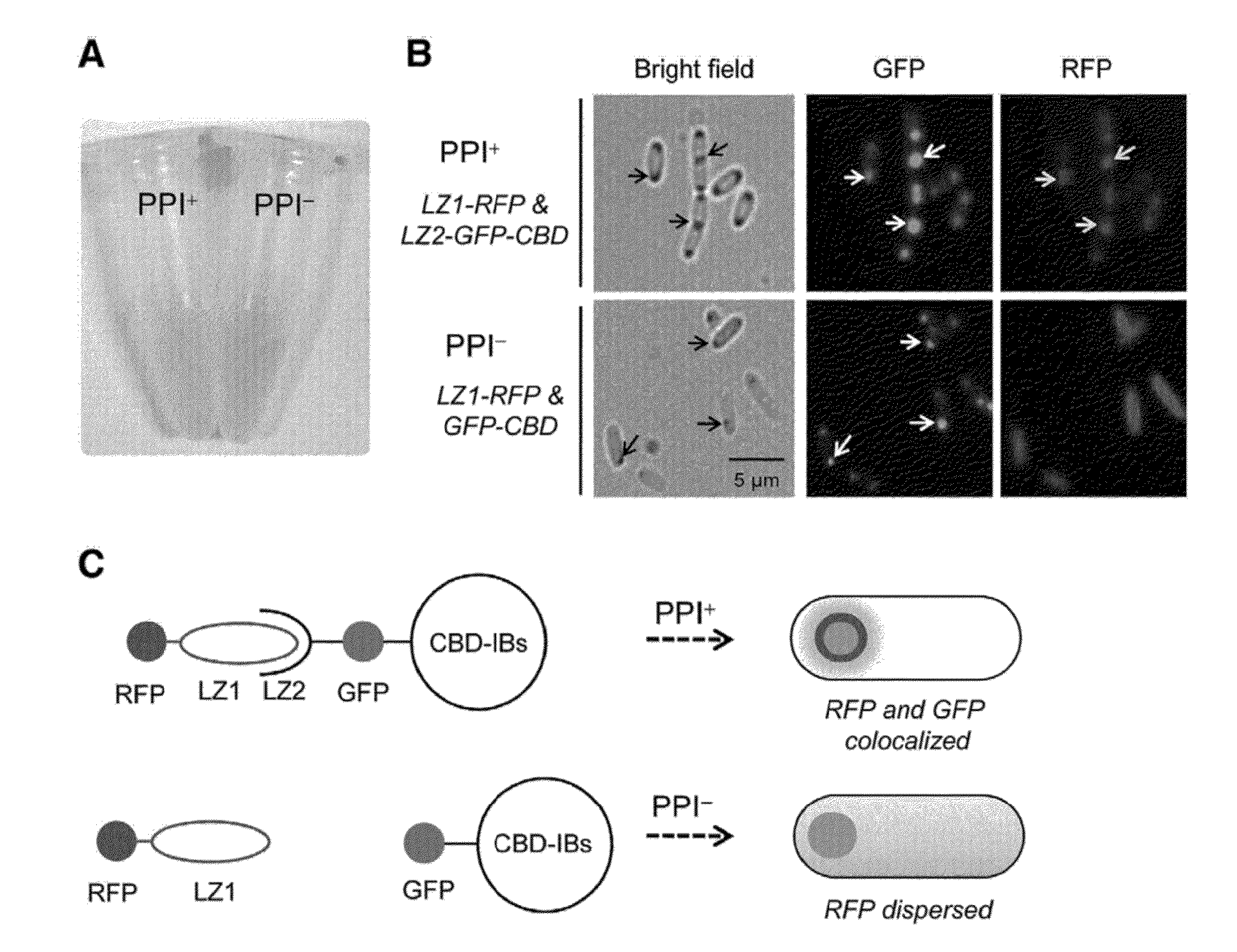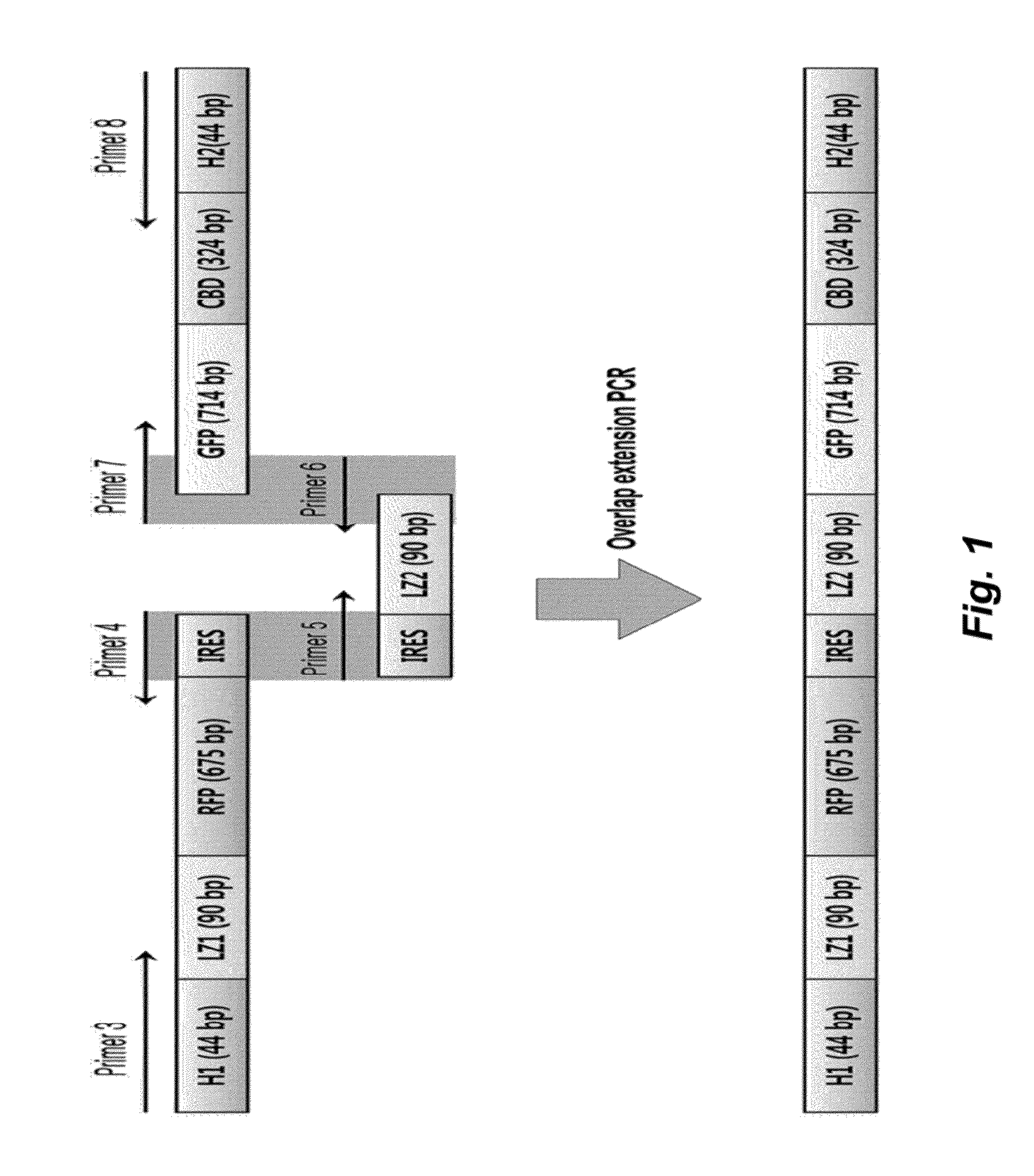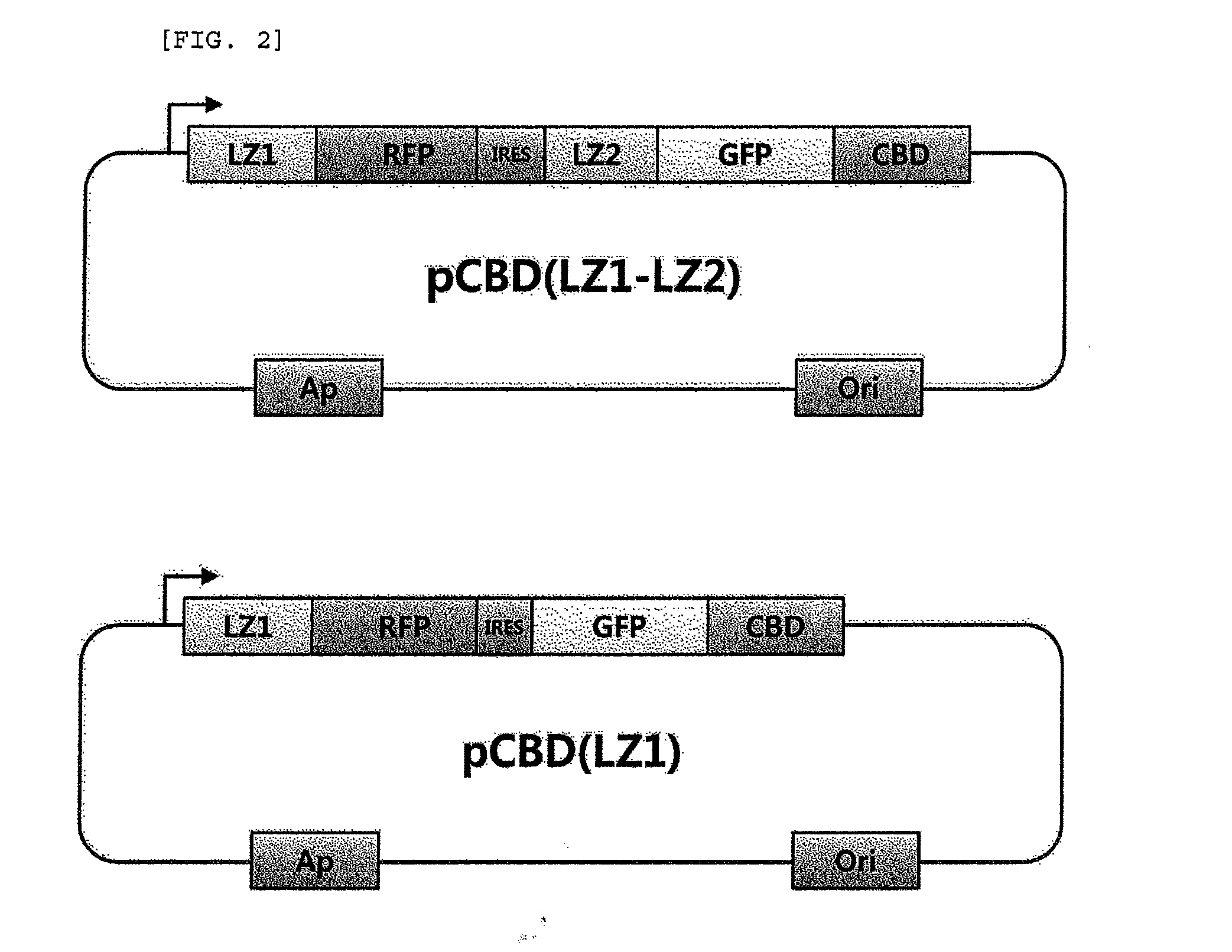Method for detecting protein-protein interactions in cells
a protein-protein interaction and living cell technology, applied in the field of living cell protein-protein interaction detection, can solve the problems of inability to apply methods for bacterial cells, inability to understand protein-protein interactions (ppi), and limitations of in-vitro analysis of dynamic protein-protein interactions in-vivo
- Summary
- Abstract
- Description
- Claims
- Application Information
AI Technical Summary
Benefits of technology
Problems solved by technology
Method used
Image
Examples
example 1
[0060]Family II CBD (cellulose-binding domain) gene was cloned from the exoglucanase gene of Cellulomonas fimi KCTC 9143 strain deposited at the Korean Collection of Type Cultures (KCTC), at the Korea Research Institute of Bioscience and Biotechnology. The improved GFP (green fluorescent protein) gene was obtained from a commercial plasmid pEGFP (Clontech, CA). A plasmid pRFP having RFP (monomeric red fluorescent protein 1) gene was provided by KAIST (Daejeon, Korea). Two antiparallel leucine zipper genes, LZ1 (EQLEKKLQALEKKLAQLEWKNQALEKKLAQ; charged residues are underlined, SEQ ID NO. 1) and LZ2 (ALKKELQANKKELAQLKWELQALKKELAQ; charged residues are underlined, SEQ ID NO. 2) were obtained from pMRBAD-Z-CGFP and pETlla-Z-NGFP which were provided by Dr. Regan at Yale university (Magliery, T. J., et al., 2005. Detecting protein-protein interactions with a green fluorescent protein fragment reassembly trap: scope and mechanism. J. Am. Chem. Soc. 127:146-57.). A...
example 2
DNA Manipulation
[0061]All primers were synthesized by Bioneer in Daejeon, Korea. Primers used in the present invention are shown in the following Table 1. NdeI and XhoI restriction sites are represented in bold.
TABLE 1 SEQPrimerIDnameSequence (5′→3′)NO.Primer 1GATATACATATGGTGAGCAAGGGCGAG3Primer 2GGTGCTCGAGTTACTTGTACAGCTTGTCCATGCC4Primer 3CCTCTAGAAATAATTTTGTTTAACTTTAAGAAGGAGATATACATATGGCAAGCGAGCAGCTGGAA5Primer 4CAATTCTTTTTTGAGGGCCATATGATAATCTCCTTCTTAAAGTTAAACAAAATTATTTTAGGCGCCGG6TGGAGTGGCGGCCPrimer 5GGCCGCCACTCCACCGGCGCCTAAAATAATTTTGTTTAACTTTAAGAAGGAGATTATCATATGGCCCT7CAAAAAAGAATTGPrimer 6CAGCTCCTCGCCCTTGCTCACCTGCGCCAGTTCCTTTTTCAG8Primer 7CTGAAAAAGGAACTGGCGCAGGTGAGCAAGGGCGAGGAGCTG9Primer 8GCAGCCAACTCAGCTTCCTTTCGGGCTTTGTTAGCAGCCGGATCTCAGCCGACCGTGCAGGGCGTGCC10
[0062]The gfp gene was amplified from pEGFP using primer 1 (SEQ ID NO. 3) and primer 2 (SEQ ID NO. 4), cleaved using NdeI and XhoI, and cloned into a pET21a vector (Invitrogen, CA) to prepare pGFP. The gfp and cbd genes were fused ...
example 3
Protein Expression
[0064]E. coli BL21 (DE3) was used as an expression host cell. The cells were transformed with pCBD(LZ1-LZ2) or pCBD(LZ1) prepared in Example 2, and cultured in LB media containing ampicillin (50 μg / ml). When OD at 600 nm reached 0.5, IPTG (isopropyl-1-thio-β-D-galactopyranoside, 1 mM) was added for the induction of CBD-induced inclusion bodies (CBD-IB), and the cells were incubated at 37° C. for 6 hours. Formation of inclusion bodies in the cultured cells was observed under a microscope. E. coli cells were disrupted by sonication on ice, and expression of the fusion protein was examined by SDS-PAGE and Western blotting. Non-aqueous fraction or CBD-IB were separated and obtained by centrifugation at 16,300×g for 10 minutes, and resuspended in PBS buffer (pH 7.4) containing Triton X-100 (0.50) to remove the membrane-bound precipitate.
PUM
| Property | Measurement | Unit |
|---|---|---|
| OD | aaaaa | aaaaa |
| pH | aaaaa | aaaaa |
| pH | aaaaa | aaaaa |
Abstract
Description
Claims
Application Information
 Login to View More
Login to View More - R&D
- Intellectual Property
- Life Sciences
- Materials
- Tech Scout
- Unparalleled Data Quality
- Higher Quality Content
- 60% Fewer Hallucinations
Browse by: Latest US Patents, China's latest patents, Technical Efficacy Thesaurus, Application Domain, Technology Topic, Popular Technical Reports.
© 2025 PatSnap. All rights reserved.Legal|Privacy policy|Modern Slavery Act Transparency Statement|Sitemap|About US| Contact US: help@patsnap.com



